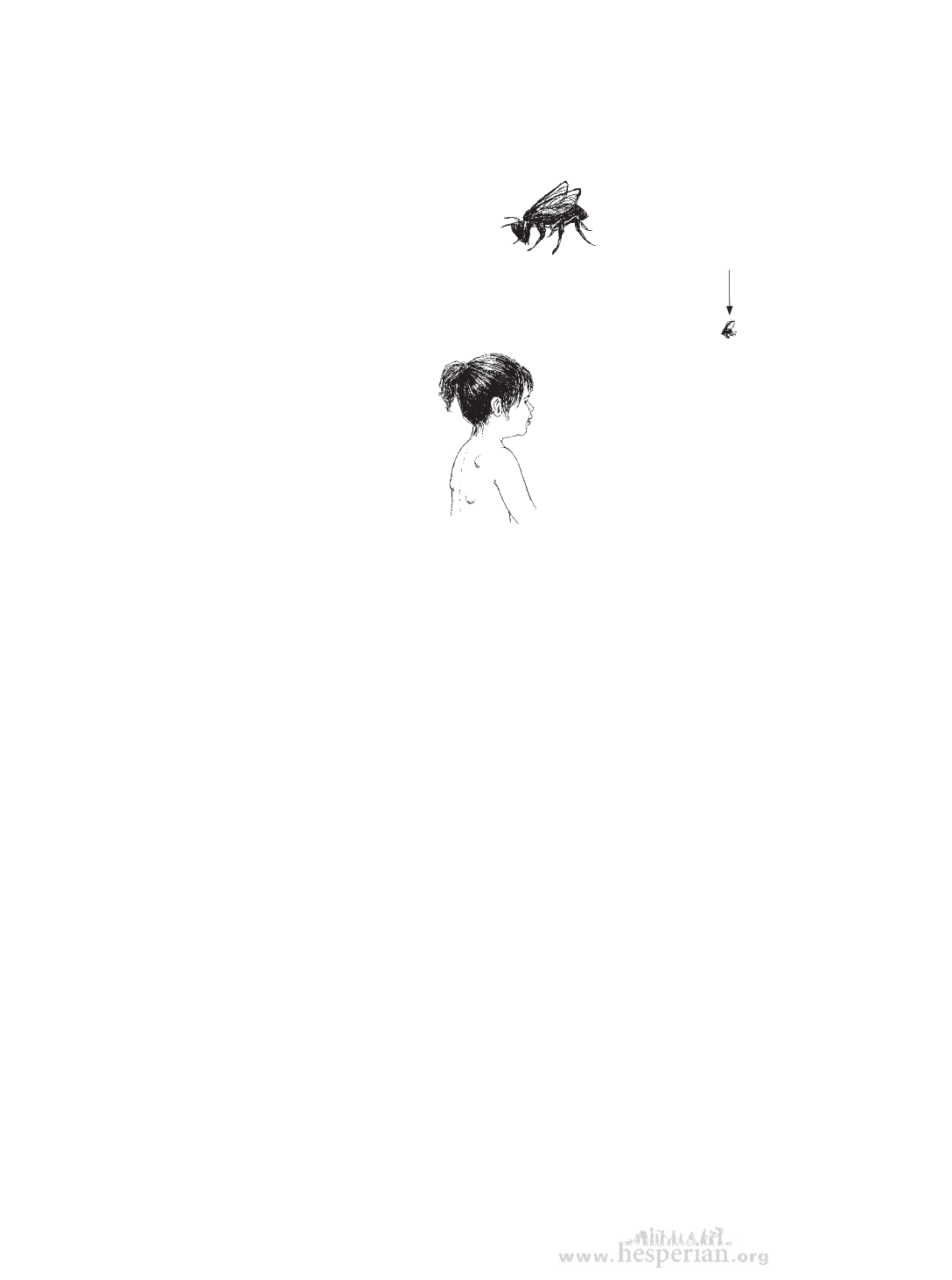
164 w h y c h i l d r e n l o s e t h e i r v i s i o n a n d w h a t w e c a n d o
River blindness (onchocerciasis)
River blindness is a disease caused by
tiny worms that are spread by tiny black
flies or “buffalo gnats.” When the fly
bites you, the worms carried by the fly
get under your skin. If these worms get
in the eye, they can cause blindness.
The black fly has a
humped back and
looks like this but
is much smaller,
like this
Signs:
• Lumps under the skin that
slowly grow to a size of 2 to 6
cm (about 1 to 2½ inches).
• There may be itching
when the baby worms are
spreading.
• Pain in the back, shoulders, or hips (or pains all over).
• Skin changes. The skin on the back or belly may become thicker,
darker, or scaly. Later, the skin becomes wrinkled, like the skin of an
old person.
• Eye problems. First the eyes get red and watery, then very painful and
itchy. Next, the center of the eye gets dull and pitted, as in ‘dry eyes’
(see page 157). Finally, the person becomes blind.
Treatment:
Some of the medicines used to treat river blindness may be harmful
for children and should only be given by a health worker. Try to take
your child to a health worker as soon as the first signs of river blindness
appear. If treated early, your child can be cured.
Prevention:
• Black flies usually breed near fast-running water. Cleaning brush
and vegetation back from the banks of fast-running streams may
help reduce the number of flies.
• Avoid sleeping out-of-doors — especially in the daytime, which is
when the flies usually bite. Mosquito nets can keep the flies away
from you while you sleep.
• Cooperate with programs for the control of black flies.
• Watch for the signs of river blindness in children so they can get
treatment as soon as possible.
helping children who are blind